So here’s the way this started. I absolutely was not spending even more uncounted hours tooling around Baseball-Reference.com for random nuggets of baseball information, and I absolutely did not totally geek out when I discovered that Rube Waddell still holds the Orioles’ franchise record for strikeouts in a game — set in 1908, when the franchise was still the St. Louis Browns.
I mean, let’s do some quick math here, that’s 112 years ago. That’s a long time! The Browns/Orioles have played approximately 17,525 games since Waddell struck out 17 batters, we’re currently in the middle of the greatest strikeout era ever, and no pitcher has topped his total. OK, it came in a 10-inning game. Fine, the franchise record for nine innings belongs to … Rube Waddell, with 16, also in 1908.
Waddell got me to looking up the franchise strikeout record for every team, and I thought about doing a piece just on those players. Instead, I expanded the scope and found an interesting record for every team — there are a few strikeout games on there, but the record can by anything. Sometimes it’s just a franchise record while a few of them are major league records. For the most part, I stayed away from famous records like Joe DiMaggio’s 56-game hitting streak or Barry Bonds’ 73 home runs. It’s really a collection of things that interested me and would be fun to write about it.
Note: Because the piece relies heavily on Baseball-Reference’s Play Index, which is searchable back to 1904, all these records are since 1904. If you’re a fan of 1890s baseball and feel slighted, I apologize.
Jump to a franchise:
American League
BAL | BOS | CHW | CLE | DET
HOU | KC| LAA | MIN | NYY
OAK | SEA | TB| TEX | TOR
National League
ARI | ATL | CHC | CIN | COL
LAD | MIA | | MIL | NYM | PHI
PIT | SD | SF | STL | WSH
AL East
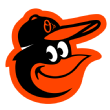 Baltimore Orioles: Melvin Mora, .340 batting average (2004)
Baltimore Orioles: Melvin Mora, .340 batting average (2004)
Since Waddell’s record came with the Browns, let’s pick something done in an Orioles uniform. Technically, George Sisler holds the franchise record with a .420 average with the Browns in 1922. In fact, 26 of the 27 highest single-season marks in franchise history come from Browns players, but Mora holds the Baltimore record and slips in at No. 22 on the franchise list. I bet even die-hard Orioles fans would have trouble guessing that Mora has the highest single-season average in club history. Mora’s big season came in the year Ichiro Suzuki hit .372, so he finished second in the batting race, but he did lead the league in on-base percentage and ranked fifth in slugging percentage and OPS.
Since moving to Baltimore in 1954, the Orioles have always emphasized power — longtime manager Earl Weaver, of course, was famous for his three-run homer strategy and the cozy dimensions of Camden Yards make it harder to rack up base hits and high averages. The Orioles have had only six players hit .320 or higher in a season and just 44 regulars have hit .300 in 66 seasons in Baltimore. Mora’s .340 mark is 10 points better than Miguel Tejada’s .330 average in 2006 — and it might stand for a long time as the Baltimore record.
 Boston Red Sox: Pedro Martinez, .167 batting average allowed (2000)
Boston Red Sox: Pedro Martinez, .167 batting average allowed (2000)
How stunningly dominant was Pedro Martinez in 2000? This is the lowest batting average a starting pitcher has ever allowed, but to put it in even more impressive perspective, consider the next four names on the list:
• Luis Tiant, .168 in 1968. The infamous Year of the Pitcher. The American League hit .230 that season and averaged 3.41 runs per game. There was so little offense that MLB lowered the mound and made the strike zone smaller for 1969.
• Nolan Ryan, .171 in 1972. Another extremely low-scoring season. The AL hit .239 and averaged 3.47 runs per game, leading to the creation of the designated hitter in 1973.
• Justin Verlander, .172 in 2019. A higher-scoring season (4.88 runs per game), but the AL batting average was still just .253.
• Nolan Ryan, .172 in 1991. The AL hit .260 while averaging 4.49 runs.
Then we consider to the American League in 2000. The league averaged 5.30 runs per game and hit .276. In the middle of all that offense, there was unhittable Pedro, giving up 128 hits in 217 innings. He gave up one hit in three starts, two hits in two and three hits in three others. He went 18-6 with a 1.74 ERA, giving him an adjusted ERA of 291, the best mark ever.
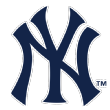 New York Yankees: Whitey Ford, 33 consecutive scoreless World Series innings (1960-62)
New York Yankees: Whitey Ford, 33 consecutive scoreless World Series innings (1960-62)
We remember Madison Bumgarner‘s postseason run a few years ago — he gave up one run in 21 innings (the final 14 scoreless) in 2014, tossed a shutout in the wild-card game in 2016 and then threw another scoreless inning in his next start, so he got up to 22 consecutive scoreless innings in the postseason. Ford didn’t give up a run for 33 straight innings — and they all came in the World Series. Top that mark, MadBum (or anyone else!). Here’s how Ford did it:
• Shutout in Game 3 in 1960
• Shutout in Game 6 in 1960
• Shutout in Game 1 in 1961
• Five scoreless innings in Game 4 in 1961 (he left early because of an ankle injury)
• One scoreless inning in Game 1 in 1962
A fascinating Ford factoid is that he never pitched in a World Series Game 7, even though the Yankees played in eight of them during his time in the majors. He was in the military for one of them and came up with a sore arm in 1964 after starting Game 1. Otherwise, he appeared in Game 6 five times but never a Game 7.
Ford could have started Game 7 in 1956, but Casey Stengel didn’t like using Ford at Ebbets Field against a Dodgers lineup that was powerful from the right side (and Ford had apparently warmed up for four innings during Don Larsen’s perfect game in Game 5). In 1960, Stengel’s decision to save Ford for Game 3 at Yankee Stadium rather than lining him up for three starts that series was a key reason Stengel lost his job after the Yankees lost Game 7 to Pittsburgh that year.
 Tampa Bay Rays: Ben Zobrist, 8.6 WAR (2009)
Tampa Bay Rays: Ben Zobrist, 8.6 WAR (2009)
Was Zobrist the best position player in the American League in 2009 when he racked up a franchise-best 8.6 WAR? Joe Mauer was the MVP that season and second in the league in WAR:
Mauer: .365/.444/.587, 28 HR, 96 RBIs, 94 runs 7.8 WAR
Zobrist: .297/.405/.543, 27 HR, 91 RBIs, 91 runs, 8.6 WAR
While Mauer had a sizable lead in OPS, Zobrist did rank fourth in the league, so it was a great year at the plate. Zobrist’s WAR advantage did not come from more playing time; Mauer had 606 plate appearances and Zobrist had 599. Baseball-Reference credits Mauer with creating 53 runs more than the average batter compared to Zobrist’s 37. Zobrist’s WAR edge comes down to defense, where he is credited with saving 25 runs above average — in a season where he started 81 games at second base, 37 in right field, six at shortstop, five in center field, two in left field and first base and one at third base. He was good at all of them, especially second base. Others have played all over the field as Zobrist did that year, but none have also hit so well. It was probably the greatest utility-player season in history. For all that, MVP voters rewarded Zobrist with an eighth-place finish.
Mauer still feels like the deserving winner, however, with a historic offensive season for a catcher. He’s credited with saving just two runs at catcher. True, it wasn’t his best season throwing out runners (he caught 26% compared to 53% in 2007), but catcher defense is hard to quantify and Mauer did win the Gold Glove. In the end, Mauer earned 0.7 defensive WAR and Zobrist was credited with 2.6, pushing him past Mauer in overall WAR. Anyway, Zobrist’s season is perhaps the best in Rays history, kicking off an amazing six-year run when he averaged 6.0 WAR per season and was one of the best players in baseball.
 Toronto Blue Jays: Dave Stieb, 48.1 WAR in the 1980s
Toronto Blue Jays: Dave Stieb, 48.1 WAR in the 1980s
Your leaders in pitching WAR for the 1980s:
Dave Stieb, 48.1
Bert Blyleven, 38.2
Roger Clemens, 35.5
Bob Welch, 35.3
Fernando Valenzuela, 33.2
What’s interesting here is that Jack Morris is not in the top five — even though he was finally elected to the Hall of Fame in part because he led the decade with 162 wins. He was not the best pitcher of the decade, however; that was Stieb and it wasn’t particularly close. Stieb was second in the decade with 140 wins. The difference? Run support. Stieb won 12 games in the decade when giving up four or more runs while Morris won 31.
In fact, with better run support, Stieb might have won three Cy Young Awards, but Cy Young voting in the 1980s still was largely predicated on win-loss record. Stieb never finished higher than fourth in the voting, even though he led in pitching WAR three straight seasons.
1982
Winner: Pete Vuckovich, 18-6, 3.34 ERA, 2.8 WAR
Stieb: 17-14, 3.25 ERA, 7.6 WAR
Stieb had 19 complete games and five shutouts to Vuckovich’s nine and one. Stieb had a 141-75 strikeout-to-walk ratio and Vuckovich was 105-102, mediocre even for the 1980s. Stieb pitched 65 more innings. He finished fourth in the voting. Probably the worst Cy Young selection of all time.
1983
Winner: LaMarr Hoyt, 24-10, 3.66 ERA, 3.7 WAR
Stieb: 17-12, 3.04 ERA, 7.0 WAR
Hoyt was a better choice than Vuckovich, but Stieb was completely ignored in the voting.
1984
Winner: Willie Hernandez, 9-3, 1.92 ERA, 32 saves, 4.8 WAR
Stieb: 16-8, 2.83 ERA, 7.9 WAR
This time the voters went with reliever Hernandez of the division-winning Tigers and he at least had a great season. Stieb threw 127 more innings, thus the big edge in WAR but picked up just one third-place vote.
Stieb had another great season in 1985, leading the AL with a 2.48 ERA but went just 14-13, and Bret Saberhagen (20-6, 2.87 ERA) won the Cy Young. Stieb finished his career 176-137 with a 56.5 WAR, falling a bit short of Hall of Fame standards in both categories. But if he had won two or three Cy Youngs and was viewed as the “pitcher of the decade,” maybe his legacy would be viewed differently.
AL Central
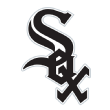 Chicago White Sox: Jack Harshman, 16 strikeouts in one game (1954)
Chicago White Sox: Jack Harshman, 16 strikeouts in one game (1954)
Chris Sale is the greatest strikeout pitcher in White Sox history, but Harshman holds the single-game franchise record, striking out 16 Red Sox batters in the first game of a doubleheader — a total that stood as the Fenway Park record until Roger Clemens fanned 20 in 1986.
Harshman’s back story is interesting. He came up through the minors as a slugging first baseman and reached the majors for a cameo with the Giants in 1948 at age 20. His career stalled in Triple-A, however, and he was converted to a pitcher in 1952. The White Sox purchased him in 1953 and gave him a chance in 1954, a season in which he would have two especially memorable games.
First came the 16-strikeout game on July 25 against a Red Sox lineup that included Ted Williams (he fanned once that day). Harshman was a left-hander who didn’t throw all that hard but had a wide variety of pitches, and he would say that day his key pitch was a palm ball he had learned from manager Paul Richards. Remember, strikeouts were not plentiful in those days, as the AL average was just 4.2 per nine innings.
A few weeks later, on Aug. 13, Harshman beat the Tigers 1-0 with a 16-inning shutout, allowing nine hits and seven walks with 12 strikeouts, stranding 17 runners while throwing an estimated 245 pitches. Since 1950, only two other pitchers have thrown a 16-inning shutout: Jerry Walker of the Orioles in 1959 and Juan Marichal of the Giants in 1963. (By the way, two days after pitching 16 innings, Harshman tossed two innings in relief!)
Harshman would win 69 games in a career eventually shortened by back problems. He remained a good-hitting pitcher, slugging 21 home runs in his career, including two seasons when he hit six.
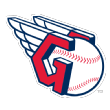 Cleveland Indians: Albert Belle, 52 doubles and 50 home runs (1995)
Cleveland Indians: Albert Belle, 52 doubles and 50 home runs (1995)
I guess this is more fun factoid than record, but it’s a record in the sense that Belle is the only player to hit 50 doubles and 50 home runs in the same season. What’s even more remarkable is that 1995 was a 144-game season (Belle played 143 games) and he still reached the milestone. Belle hit .317/.401/.690 that year, leading the AL in doubles, home runs, slugging percentage and total bases and tying for the lead in runs and RBIs. He finished second to Mo Vaughn in a close MVP vote.
That was an interesting vote. Vaughn hit .300 with 39 home runs and tied Belle with 126 RBIs, but he was a bad first baseman — although Belle was an indifferent left fielder. Vaughn received 12 first-place votes to 11 for Belle. Vaughn’s win came down to two key factors: (1) The Red Sox won a close AL East race over the Yankees while the Indians stomped through the AL Central, so Vaughn seemed to get extra credit for leading the Red Sox; (2) Belle had a monster final month, after Cleveland had already wrapped up the division, hitting 17 home runs. Actually, Belle had a monster August and September, hitting .350 with 31 home runs and 62 RBIs in TWO MONTHS, slugging .885. Dear lord. Who should have won the MVP? Baseball-Reference’s WAR says John Valentin, Vaughn’s Boston teammate, was the best position player in the league (Randy Johnson led in overall WAR). Edgar Martinez, who matched Belle in WAR and runs and topped him in OPS, finished third in the voting and had a strong case as well.
 Detroit Tigers: Cesar Gutierrez, 7-for-7 (1970)
Detroit Tigers: Cesar Gutierrez, 7-for-7 (1970)
Johnny Burnett of the 1932 Indians holds the record for most hits in a game, going 9-for-11 in an 18-inning game. Four players have seven hits in a game. Brandon Crawford went 7-for-8 in a 14-inning game for the Giants in 2016, Rocky Colavito went 7-for-10 for the Tigers in a 22-inning game in 1962. Then we have the two players who went 7-for-7. Rennie Stennett did it for the Pirates in 1975 in a 22-0 victory over the Cubs. He’s the only player to get seven hits in a nine-inning game. Stennett wasn’t a star, but he played 11 seasons in the majors. Gutierrez, however, was an obscure shortstop who played just 223 games in the majors, never hit a home run and finished with a .235 career average. His game to remember came in the second game of a doubleheader on June 21, 1970, against the Indians.
Gutierrez’s day: He looped a single to center in the first inning, singled to left in the third, singled to deep short in the fifth, doubled to left in the seventh, singled to right in the eighth, beat out an infield grounder behind second in the 10th and slashed a single off the pitcher’s glove in the 12th.
The AP story from the game made a point to note Gutierrez weighed just 155 pounds. Gutierrez said, “I’ve been hitting the ball good, but I haven’t been getting on. Sometimes you have to be lucky. I swing a heavy 36-ounce bat and I do not go for the long ball. I hit bloopers.”
 Kansas City Royals: Joe Randa, six runs in a game (2004)
Kansas City Royals: Joe Randa, six runs in a game (2004)
Only eight players have scored six runs in a game — actually, only seven players, since Mel Ott did it twice. You would expect the rest of the list to include more Hall of Famers or high on-base guys like Ted Williams or Mickey Mantle. Instead, it’s a random list because scoring six runs is a crazy, random event. Here it is:
• Ott did it in 1934 in a 21-4 win and again in 1944 in a 26-8 win.
• Johnny Pesky went 4-for-5 with a walk in a 14-10 victory for the Red Sox in 1946.
• Frank Torre, Joe’s older brother, scored just 46 runs as a platoon first baseman for the Milwaukee Braves in 1957, but he went 4-for-5 with a walk in a 23-10 win at Wrigley.
• Spike Owen, like Pesky a Red Sox shortstop, went 4-for-5 with a home run and a walk in a 24-5 victory at Cleveland in 1986 — batting ninth in the lineup.
• Edgardo Alfonzo of the Mets went 6-for-6 with three home runs and a double at the Astrodome in 1999. (Jeff Bagwell and Jim Wynn are the only other players with a three-homer game at the Astrodome.)
• Shawn Green of the Dodgers, who on his historic 6-for-6 day in 2002 hit four home runs and a double.
And, finally, Joe Randa. The 2004 Royals were not a good club, finishing 58-104. Their offense was bad, but on Sept. 9, the Royals erupted for a 26-5 win over the Tigers at Comerica Park in the first game of a doubleheader. Batting fifth, here’s how Randa scored six runs:
First inning: Doubled, advanced to third on a throw and scored on Calvin Pickering fly ball.
Third inning: Singled with one out, moved up on a walk and scored on Dee Brown’s single.
Third inning: Singled with one out (13 Royals in a row would reach base) and scored on Alberto Castillo’s base hit.
Fourth inning: Singled with two outs and scored on Castillo’s base hit.
Sixth inning: Led off with an infield hit and came around on David DeJesus’ two-out double.
Seventh inning: Struck out.
Ninth inning: Singled with two outs and scored on Dee Brown’s base hit.
So there you go: 6-for-7, one double, two RBIs, six runs scored. History. Oh, in the second game of that doubleheader? The Royals got shut out.
 Minnesota Twins: Carlos Silva, 0.43 walks per nine innings (2005)
Minnesota Twins: Carlos Silva, 0.43 walks per nine innings (2005)
Don’t be mad at me, Twins fans, I know you expected something more exciting than Carlos Silva. But, hey, this is the modern record for fewest walks per nine innings. Would you have preferred Glenn Adams and Randy Bush, who share the franchise record with eight RBIs in a game?
Anyway, of the 25 lowest walk rates for a qualified pitcher, 24 of them happened in the 1870s or 1880s, and as awesome as it is that we know Cherokee Fisher’s walk total from 1876, Silva’s season is extraordinary in his refusal to do anything except throw the ball over the plate. He walked nine batters in 188⅓ innings — and two of those were intentional. The closest to him in the past 100 years is Bret Saberhagen, who walked 0.66 per nine innings in 1994.
Yes, I had to look up Silva’s seven non-intentional walks that season:
• May 14: David Dellucci on a 3-1 pitch.
• May 31: Travis Hafner on a 3-1 pitch.
• June 11: J.D. Drew on a 3-1 pitch.
• June 17: Geoff Blum on a 3-2 pitch. Probably a bad call by the umpire.
• July 18: Jay Gibbons on a 3-2 pitch.
• Aug. 8: Chris Snelling on a 3-1 pitch. And, yes, this research was worth it just for a Chris Snelling reference.
• Sept. 5: Gary Matthews on a 3-0 pitch. The only four-pitch walk.
All those guys were left-handed batters or switch-hitters. Silva didn’t walk a single right-handed batter all season. One of the wonderful aspects of baseball is a player who decides he’s just going to do something different than everybody else. It’s rare, but that became Silva’s philosophy. He threw a low-90s sinker over the plate pitch after pitch. He did give up a lot of hits, but because he didn’t walk anybody and got a lot of double plays, the approach worked for a few seasons (he had a 3.44 ERA in 2005).
AL West
 Houston Astros: Gerrit Cole, 16 consecutive winning decisions (2019)
Houston Astros: Gerrit Cole, 16 consecutive winning decisions (2019)
This is a fun one because it is still ongoing — although Cole will obviously have to continue the streak in Yankee pinstripes. Given the level of dominance Cole established last season, it is not unthinkable that he could approach Carl Hubbell’s all-time record of 24 consecutive winning decisions, set over two seasons, from July 1936 to May 1937.
There is a hitch here. Cole did lose a game in the World Series, after winning his first three decisions of the postseason. For record book purposes, however, the postseason is separate from the regular season, so Cole’s streak is considered intact. Anyway, Hubbell also lost a game in the 1936 World Series, so his streak is not unblemished either.
As impressive as Cole’s streak is, others in recent seasons also have had long winning streaks. Jake Arrieta won 20 decisions in a row from July 30, 2015, to May 31, 2016 (Arrieta lost a game in the 2015 postseason). Stephen Strasburg matched Cole with a 16-game streak from 2015 to ’16. Jose Contreras won his final eight starts of 2005 and his first nine decisions of 2006, giving him a 17-game streak. Contreras, likewise, lost one game in the 2005 postseason. Johan Santana also had a 17-game streak from 2004 to ’05, with another win in the postseason, so 18 in a row without a loss. Roger Clemens won 20 in a row from June 1998 to June 1999 (with no postseason) and had another 16-game streak in 2001.
Anyway, Cole is riding another streak that is already a major league record: nine consecutive games with 10 or more strikeouts, breaking the mark of eight shared by Chris Sale and Pedro Martinez. He actually ran that to 11 in a row in the postseason before the Yankees finally snapped it in the AL Championship Series. All eyes will be on Cole anyway when he makes his Yankees debut, but these streaks are even more reason to watch him once we’re finally playing games again.
 Los Angeles Angels: Nolan Ryan, 383 strikeouts (1973)
Los Angeles Angels: Nolan Ryan, 383 strikeouts (1973)
This qualifies as a significant record, of course — well, technically it’s the modern record, as Old Hoss Radbourn struck out 441 batters for Providence in 1884 and, depending on how you feel about the American Association of the 19th century, Matt Kilroy fanned 513 for Baltimore in 1886. Ryan’s record is the one that matters, however, and it has stood the test of time for a remarkable 46 seasons.
Ryan broke Sandy Koufax’s mark of 382, striking out 10 or more batters in 23 of his 39 starts. Randy Johnson has come closest since, finishing with 372 strikeouts in 2001. In fact, since Ryan established his record in 1973, the eight highest strikeout totals belong to either Johnson or Ryan. Ninth on the list is the guy above, Gerrit Cole, who struck out 326 last season.
That points to the difficulty in breaking Ryan’s record. Cole averaged 13.8 strikeouts per nine innings and struck out 39.9% of the batters he faced, both records for a starting pitcher, compared to 10.6 and 28.2% for Ryan. The difference: Ryan pitched 326 innings while Cole threw just 212⅓. Based on that innings total, in order to break Ryan’s record, Cole would have had to average 16.3 strikeouts per nine! To catch Ryan, a starter will have to throw more innings than Cole did — at a time when starter innings are declining. If Cole averaged 13.8 K’s per nine over 251 innings, he’d get to 384 strikeouts. The last time a pitcher threw 250 innings was 2011, when it was done by Justin Verlander, who led the majors with 223 innings in 2019. So Ryan’s record is not unbreakable, but it does appear pretty safe.
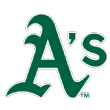 Oakland Athletics: Jose Rijo, 16 strikeouts in one game (1986)
Oakland Athletics: Jose Rijo, 16 strikeouts in one game (1986)
This is the Athletics’ franchise record for strikeouts in a nine-inning game, and I had to pick this one: I was there! Four A’s pitchers have more K’s in a game, but all came in extra-inning efforts. Jack Coombs twice fanned 18, but it took him 18 and 24 (!) innings to do it. Rube Waddell — there’s our guy again! — fanned 17 in 12⅓ innings and Vida Blue matched that total over 11 innings in his mercurial 1971 season.
But we turn to Rijo, still just 20 years old when he dominated the Mariners at the Kingdome on April 19, for the nine-inning mark — and he did it while pitching just eight-plus innings. Reliever Bill Mooneyham struck out two more Mariners in the ninth, and four Seattle pitchers combined for 12 strikeouts as the teams combined for a then nine-inning record of 30 strikeouts. In his next start on April 24, Rijo fanned 14 Mariners in 8⅓ innings, giving him 30 K’s over two games. It’s worth noting that the Mariners were in a historic strikeout slump at the time. Later in April, Roger Clemens would set the single-game record with 20 strikeouts (and they would fan 16 more times the game after that).
As for Rijo, the A’s would give up on him too soon, trading him to the Reds after the 1987 season for Dave Parker. Rijo emerged as a star in Cincinnati and went 87-53 with a 2.63 ERA over the next seven seasons. But his two highs for strikeouts remained those two starts against Seattle in 1986.
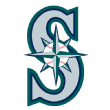 Seattle Mariners: Bret Boone, AL record for most RBIs by second baseman (2001)
Seattle Mariners: Bret Boone, AL record for most RBIs by second baseman (2001)
We could have gone with Ichiro Suzuki’s all-time record of 262 hits in a season — good luck breaking that one! — but Boone’s mark is fascinating, if less well known. Here are the season leaders for RBIs for players who played at least half their games at second base:
Rogers Hornsby, 1922 Cardinals: 152
Rogers Hornsby, 1929 Cubs: 149
Rogers Hornsby, 1925 Cardinals: 143
Bret Boone, 2001 Mariners: 141
Jeff Kent, 1998 Giants: 128
No. 2 on the AL list is Charlie Gehringer with 127 in 1934. The most RBIs by a second baseman since 2001 is Robinson Cano‘s 118 with the Yankees in 2011, so no second baseman has come close to Boone in the past two decades. How did Boone do it? He started 94 games batting fifth and 49 games batting third, but no matter where he hit he had players with high on-base percentages in front of him: Ichiro, Mark McLemore, John Olerud and Edgar Martinez.
Boone hit .300 with runners in scoring position, .311 with men on base and drove himself in 37 times with home runs. More importantly, it was about opportunity. Boone had 556 runners on base when he batted that season. Since then, only Justin Morneau with 558 in 2008 has had more. Juan Soto led the majors in 2019 with 473.
Boone finished third in the MVP voting behind Ichiro and Jason Giambi, but had a good case as the deserving winner (he had 8.8 WAR to Ichiro’s 7.7, with Giambi at 9.2). It stands as one of the best seasons ever by a second baseman.
 Texas Rangers: Rafael Palmeiro, 1.050 OPS (1999)
Texas Rangers: Rafael Palmeiro, 1.050 OPS (1999)
This one surprised me, as I would have guessed Alex Rodriguez, Juan Gonzalez or Josh Hamilton as the franchise leader in OPS. Instead it’s Palmeiro, for a season in which he hit .324/.420/.630 with 47 home runs and 148 RBIs.
Your franchise leaders:
Palmeiro, 1999: 1.050
Hamilton, 2010: 1.044
A-Rod, 2001: 1.021
A-Rod, 2002: 1.015
Gonzalez, 1996: 1.011
If we adjust for ballpark and era by using OPS+, we get a different leaderboard:
Frank Howard, 1969: 178
Frank Howard, 1968: 171
Hamilton, 2010: 170
Frank Howard, 1970: 170
Gonzalez, 1993: 169
Howard’s three seasons came when the franchise was still the Washington Senators. Howard was one of the largest humans to ever play major league baseball, listed at 6-foot-7 and 255 pounds (he had played basketball at Ohio State). Think Aaron Judge, with less speed and athleticism (Howard was, shall we say, not the greatest left fielder around). Howard spent his career in poor hitters’ parks (Dodger Stadium and RFK Stadium) and most of it in the pitching-dominated 1960s. If he had played in Palmeiro’s era, he would have had 500 home runs.
As for Palmeiro, we know his story, shut out of the Hall of Fame despite 569 home runs, 3,020 hits and 1,835 RBIs because of a positive test for steroids in 2005. He finished second to Manny Ramirez in the AL in OPS in 1999 and finished fifth in the MVP voting, the best of his career. But the famous part of his 1999 season: That was the year he won the Gold Glove despite starting just 28 games at first base.
NL East
 Atlanta Braves: Tony Cloninger, 9 RBIs in one game (1966)
Atlanta Braves: Tony Cloninger, 9 RBIs in one game (1966)
This is one of my favorite semi-obscure records. Cloninger holds the franchise record for RBIs in a game — not Eddie Mathews or Hank Aaron or Dale Murphy of Chipper Jones — but what makes it especially noteworthy is that Cloninger was a pitcher, so this is also the major league record for RBIs in a game by a pitcher.
Cloninger won 113 games in his career, including 24 in 1965, the Braves’ final season in Milwaukee. On July 3, 1966, at Candlestick Park, he hit a grand slam in the first inning off Joe Gibbon and then another grand slam in the fourth inning, off Ray Sadecki. He added an RBI single in the eighth and finished off the 17-3 win with a complete game. Cloninger had another two-homer, five-RBI game earlier in the 1966 season and finished the season hitting .234 with five home runs and 23 RBIs. No pitcher has had more RBIs in a season since then, although Cloninger didn’t even lead pitchers in home runs that year — it was Earl Wilson, who hit seven.
 New York Mets: John Olerud, .354 average (1998)
New York Mets: John Olerud, .354 average (1998)
Two players hold the single-season batting marks for more than one franchise, again not including the wild and crazy 19th century. Rogers Hornsby holds the records for the Cardinals (.424), Braves (.387) and Cubs (.380). Then we have Olerud, who holds the Blue Jays’ mark with a .363 average in 1993 and set the Mets’ record five years later.
Earlier, I mentioned the Orioles having few high-average hitters in their franchise history. The Mets are similar. Shea Stadium was always a tough place to hit for average — whether it was the hitting background or the lights or whatever, it was always a park conducive to a lot of strikeouts and thus lower averages. Only eight Mets have hit .320 and only 36 have hit .300. Olerud’s .354 season is 14 points better than Cleon Jones’ .340 average in 1969.
What’s odd is that Olerud had those two MVP-type seasons that stand well outside his career norms, although he was always a consistent, excellent player with high on-base percentages. He hit .300 just two other times, and barely at that (.302 in 2001 and .300 in 2002). As you would guess, he benefited from unusually high BABIPs in his two big seasons: .375 in 1993 and .373 in 1998. Was he actually better those two seasons or just lucky? Probably a little of both.
 Miami Marlins: Ricky Nolasco, 16 strikeouts in one game (2009)
Miami Marlins: Ricky Nolasco, 16 strikeouts in one game (2009)
You would expect to see the late, great Jose Fernandez here, but his career high for strikeouts in a game was 14 — accomplished five times. Or maybe a young Josh Beckett or Josh Johnson during his short peak of pre-injury dominance. Nolasco’s mark of 16 strikeouts is the franchise best by two in the regular season, or one if you include the postseason (Livan Hernandez had 15 K’s in the NLCS in 1997). Nolasco did this while throwing just 7⅔ innings against the Braves on Sept. 30, 2009. That may look like a meaningless late-season game, but it wasn’t, as the Braves entered the day three games out of the wild card with five to play.
Nolasco was a pitcher we kept waiting to turn the corner and do bigger things. He had swing-and-miss stuff and good strikeout-to-walk ratios. After posting a 3.52 ERA in 2008, he had a 4.48 ERA over the next five seasons with the Marlins (and a partial season with the Dodgers). His FIP (fielding independent pitching) over that span, however, was 3.58, and he always managed to underperform his expected results. He did manage to parlay those expectations into a four-year, $49 million contract from the Twins.
 Philadelphia Phillies: Ryan Howard, 58 home runs (2006)
Philadelphia Phillies: Ryan Howard, 58 home runs (2006)
In the second half of his Phillies career, Howard got beaten up a lot for the bad contract extension and his declining production. Even at his best, post-hoc analysis via WAR suggests he wasn’t as good as everyone believed at the time, when he finished first, fifth, second, third, 10th and 10th in MVP voting his first full six seasons in the league. But, man, the dude belted a lot of home runs and drove in a lot of runs for a few years there (averaging 50 home runs and 143 RBIs from 2006 to 2009).
Howard’s 58 bombs in 2006 are 10 more than he hit in 2008 and Mike Schmidt hit in 1980. This interested me in looking up which franchise had the biggest differential between its top home run guy and the No. 2 guy (which is sometimes the same player). The five largest:
Giants: +23 (Barry Bonds 73, Willie Mays 52)
Marlins: +17 (Giancarlo Stanton 59, Gary Sheffield 42)
Diamondbacks: +13 (Luis Gonzalez 57, Mark Reynolds 44)
Mets: +12 (Pete Alonso 53, Carlos Beltran 41)
Phillies: +10 (Howard 58, Howard/Schmidt 48)
Royals: +10 (Jorge Soler 48, Mike Moustakas 38)
Side note, now that Soler became the first Royals player with 40 home runs — and ended the Royals’ distinction of being the last team without a 40-homer hitter), the lowest franchise-leading home run figure now belongs to … drum roll, please … the Rays and Nationals/Expos at 46 (Carlos Pena for the Rays, Alonso Soriano for the Nats).
As for Howard, while we may dismiss his MVP season in 2006 as something that wouldn’t happen now, it’s worth noting that it was a great RBI season and a great clutch performance. His win probability added of 8.2 is the best in Phillies history (ahead of 7.1 for Don Hurst in 1932 and Chuck Klein in 1933). Howard’s figure didn’t lead the NL that year — Albert Pujols was at 9.4 — but it still was a big total. In fact, hitters have topped 8.0 WPA just 11 times since 2000 (Bonds did it three times) and no one has topped Pujols or Howard since 2006.
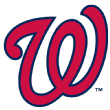 Washington Nationals: Anthony Rendon (2017) and Mark Reynolds (2018), 10 RBIs in one game
Washington Nationals: Anthony Rendon (2017) and Mark Reynolds (2018), 10 RBIs in one game
Sixteen players since 1900 have driven in 10 or more runs in a game, and while I distinctly remember Rendon’s monster game against the Mets in 2017 because I happened to be watching that day, I had completely forgotten that Reynolds matched his total a year later. Put it this way: There are fewer 10-RBI games than perfect games (23). We should celebrate 10-RBI games more than we do! I know people who can name all 23 perfect game starters. Do you know anyone who can name the 10-RBI batters? For the record: Wilbert Robinson (11), Jim Bottomley (12), Tony Lazzeri (11), Phil Weintraub (11), Rudy York (10), Walker Cooper (10), Norm Zauchin (10), Reggie Jackson (10), Fred Lynn (10), Mark Whiten (12), Nomar Garciaparra (10), Alex Rodriguez (10), Garret Anderson (10), Rendon (10), Scooter Gennett (10), Reynolds (10).
Since Reynolds just retired, let’s run down his 10-RBI game, which came in an 18-4 win at home over the Marlins:
• Two-run homer in the second
• RBI double in the fourth
• Two-run single in the fifth
• Three-run homer in the sixth
• Two-run single in seventh
That was it. Reynolds batted only five times. The only other player to go 5-for-5 with at least 10 RBIs is Gennett, who homered four times on his big day. York and Garciaparra had the fewest hits on the list, as both managed to drive in 10 runs on just three hits (York had a two-run double and two grand slams while Garciaparra had two grand slams and a two-run homer). Anyway, have a day, Mark Reynolds.
NL Central
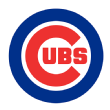 Chicago Cubs: Hack Wilson, 191 RBIs in a season (1930)
Chicago Cubs: Hack Wilson, 191 RBIs in a season (1930)
This mark has stood for 90 years, and unless current conditions change it’s going to stand for another 90 years. Here are the best RBI seasons each decade since Wilson set his record:
1930s: Lou Gehrig, 185 (1931)
1940s: Ted Williams and Vern Stephens, 159 (1949)
1950s: Al Rosen, 145 (1953)
1960s: Tommy Davis, 153 (1962)
1970s: George Foster, 149 (1977)
1980s: Don Mattingly, 145 (1985)
1990s: Manny Ramirez, 165 (1999)
2000s: Sammy Sosa, 160 (2001)
2010s: Miguel Cabrera, 139 (2012)
Not listed: Jeff Bagwell, who drove in 116 runs in 110 games in 1994, which prorates to 171 over 162 games. Still, imaginary Bagwell was 20 RBIs short of Wilson’s record. The problem is replicating the perfect conditions for Wilson in 1930:
• A high-scoring era. 1930 was the best hitting season in modern baseball and the NL averaged 5.68 runs per game. The Cubs scored 998 runs, averaging 6.4 per game.
• A great hitters’ park. Wilson hit .388 with 33 home runs at home compared to .321 with 23 home runs on the road.
• High on-base hitters at the top of the lineup. Wilson spent all 155 games batting cleanup. The top three spots in the Cubs’ lineup had OBPs of .332, .425 and .425. An important facet of that, however, is that they hit a lot of doubles (120) and triples (44) to put themselves in scoring position, but not an abundance of home runs to drive themselves in (38). That gave Wilson a ton of RBI opportunities, and he hit .356 with 56 home runs.
In today’s game, even players at the top of the lineup hit home runs. The Yankees, for example, led the majors last season with 943 runs scored, but their top three spots in the lineup hit 115 home runs. That eliminates RBI opportunities for the cleanup hitter. To create a perfect storm of RBI chances, you need three players with high OBPs but relatively modest totals of home runs. Here’s an example of recent players who meet the criteria:
2004 Ichiro Suzuki: .414 OBP, 8 HRs
2018 Joey Votto: .417 OBP, 12 HRs
2016 DJ LeMahieu: .416 OBP, 11 HRs
Let’s do some quick math. The top three spots in the Cubs’ lineup in 1930 reached base 912 times, including times reached on error. That’s 874 times on after subtracting the home runs. (They weren’t ALL on base for Wilson, but we don’t have complete data for the actual number of runners on base while he was batting. This gives us a figure to shoot for, however.)
The top three players in 2019 for reaching base were Alex Bregman, Marcus Semien and Mookie Betts, who combined for 863 times on base, but also hit 103 home runs. That’s not going to work. Here’s who we need:
2004 Ichiro Suzuki: 331 times on base, 8 HRs
2013 Joey Votto: 320 times on base, 24 HRs
2016 Mike Trout: 310 times on base, 29 HRs
That’s 961 times on base minus 61 home runs, giving us 900 times on. It can be done!
Then you just need to find a cleanup man who can hit .350 with 50-something home runs.
 Cincinnati Reds: Jim Maloney (1963) and Ron Villone (2000), 16 strikeouts in one game
Cincinnati Reds: Jim Maloney (1963) and Ron Villone (2000), 16 strikeouts in one game
Another one from the strikeout list. Maloney is not a surprise here, as he was one of the great fireballers of the 1960s. He also holds the overall club record with 18 strikeouts in a game, coming when he pitched 11 innings against the Mets in 1965 — a famous game in its own right. Maloney pitched 10 no-hit innings, gave up a home run (plus another hit) in the top of the 11th and lost 1-0. He did pitch two no-hitters in his career, including a 10-inning no-hitter against the Cubs in 1965 in which he walked 10 and struck out 12.
But Ron Villone shares the record for a nine-inning game? Of all the franchise-record holders for strikeouts in a game, Villone is the least accomplished, at least in terms of career WAR, finishing with just 4.3. That’s not to knock him. He had a 15-year career, although he spent most of it as a reliever. The Reds signed Villone as a free agent early in the 1999 season after Cleveland released him, and Cincinnati gave him some starting opportunities the next few seasons. In 2000, he went 10-10 with a 5.43 ERA, but walked more batters (78) than he struck out (77). Villone threw hard, but the stuff played up better in relief.
His record-setting day came in his final start of the season, a Friday night in St. Louis. His season high for strikeouts in 22 starts to the point was five. He was facing a pretty good Cardinals lineup: Fernando Vina, Shawon Dunston, Jim Edmonds, Eric Davis, Fernando Tatis, Will Clark, Edgar Renteria and Eli Marrero, plus Mark McGwire as a pinch hitter. This was not a lineup of September call-ups — the Cardinals had already clinched the NL Central but were still aiming for top seed in the NL.
Pete Harnisch was the scheduled Reds starter, but Villone was a last-minute replacement. “Once in a while you’re going to go out and do the things you’re supposed to and stay focused,” Villone said after the game. He allowed just two hits, threw 148 pitches and survived two walks in the ninth to throw the complete game (he also had three hits). He threw just one other complete game in his career and never struck out more than eight.
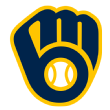 Milwaukee Brewers: Robin Yount, 9.9 offensive WAR (1982)
Milwaukee Brewers: Robin Yount, 9.9 offensive WAR (1982)
With all due respect to Christian Yelich or Ryan Braun, Yount’s MVP season in the franchise’s only World Series year remains the pinnacle of Brewers achievement. Yount towers over all other Brewers on the club’s single-season WAR leaderboard:
Yount, 1982: 10.5
Braun, 2011: 7.7
Carlos Gomez, 2013: 7.6
Tommy Harper, 1970: 7.4
Yount, 1983: 7.3
Yelich, 2018: 7.3
What’s less clear is if Yount’s season — he hit .331/.379/.578 with 210 hits, 46 doubles, 12 triples, 29 home runs, 114 RBIs and 129 runs — is the best offensive season in Brewers history. There are different ways you can look at that. Prince Fielder in 2009 and Yelich in 2019 (in just 130 games) created an estimated 150 runs, most in franchise history. Yelich’s 179 OPS+ from 2019 makes him the leader over Braun in 2011, Fielder in 2009 and Yount in 1982, all at 166. Fielder leads in adjusted batting runs (above an average hitter) with 61, just ahead of Yelich’s 60.
Regardless, Yount’s season was remarkable, especially for a shortstop. He led the AL in slugging, OPS, OPS+, hits, doubles and total bases (and added a Gold Glove). It’s arguably the best season ever for a shortstop. Baseball-Reference’s single-season leaderboard:
Cal Ripken, 1991: 11.5
Honus Wagner, 1908: 11.5
Yount, 1982: 10.5
Alex Rodriguez, 2000: 10.4
Lou Boudreau, 1948: 10.3
Ripken had similar numbers to Yount: .323/.374/.566, 34 home runs, 46 doubles. B-R loves his defense, crediting him with 23 runs saved, which pushes him ahead of Yount. If we strip out defense, we get this leaderboard for Offensive WAR:
Wagner, 1908: 11.4
Arky Vaughan, 1937: 10.0
Yount, 1982: 9.9
Wagner, 1907: 9.8
Ripken, 1991: 9.2
Rodriguez, 2001: 9.2
If you’re dubious about Ripken’s true defensive value and dubious about putting Wagner No. 1 given the dead ball era, maybe Yount’s season is the one you like. Brewers fans will agree.
 Pittsburgh Pirates: Roy Face, 18-1 record (1959)
Pittsburgh Pirates: Roy Face, 18-1 record (1959)
Face and Hoyt Wilhelm were the best relievers of the late 1950s/early 1960s and both relied on a “trick” pitch of sorts. Wilhelm, of course, threw a knuckleball, while Face — who was just 5 foot 8 — relied heavily on a forkball, which is similar to a split-fingered fastball. Face said he may have been the only pitcher throwing the pitch back then and estimated that when it was working well, he would throw it 70% of the time.
Face used that forkball to rack up the single-season record with a .947 winning percentage (minimum one decision per 10 games played), with all his decisions coming in relief. He won his first 17 decisions before finally losing a game and won 22 in a row going back to 1958. He was accused of “vulturing” wins along the way — blowing a lead and then getting the win when the Pirates rallied to victory. There were just four of those games, however, so this was mostly about good pitching (he had a 2.60 ERA in 93 innings) and good timing — 10 of his wins came in extra-inning games.
While Face’s record has lasted 60 seasons, it’s not unbreakable. Others have come close in recent years:
Greg Maddux: 19-2 in 1995
Randy Johnson: 18-2 in 1995
Aaron Sanchez: 15-2 in 2016
Cliff Lee: 22-3 in 2008
Max Scherzer: 21-3 in 2013
Clayton Kershaw: 21-3 in 2014
Starters don’t get as many decisions as they once did, which means they don’t lose as many games either. It doesn’t necessarily mean you have to have a super dominant season either. Sanchez went 15-2 in 30 starts for the Blue Jays with a 3.00 ERA, but he had a good offense backing him up. When Kershaw went 21-3, he had one bad start in which he allowed seven runs, but in his other two losses, he allowed three runs in seven innings and three runs in nine. With a little more run support in those games, he easily could have gone 23-1. And we mentioned Gerrit Cole above, winner of 16 consecutive games last season. Now, if somebody goes 9-0 in an 80-game season in 2020 … well, let the debate begin if that should count.
 St. Louis Cardinals: Jim Bottomley and Mark Whiten, 12 RBIs in one game
St. Louis Cardinals: Jim Bottomley and Mark Whiten, 12 RBIs in one game
It’s one of the wonderful quirks of baseball history that two players have driven in 12 runs in a game and both played for the same franchise. When I was growing up, Bottomley’s record was one of the most famous in the sport. Heck, he made the Hall of Fame largely on the strength of that one game (and being one of Frankie Frisch’s cronies when Frisch strong-armed the Veterans Committee into selecting several of his former teammates).
Here’s how each player did it.
First, Bottomley:
First inning: Two-run single
Second inning: Two-run double
Fourth inning: Grand slam
Sixth inning: Two-run home run
Seventh inning: Two-run single
Ninth inning: RBI single
That’s 6-for-6 with two home runs in a 17-3 win over Brooklyn.
Whiten’s big game came in the second game of a doubleheader in Cincinnati:
First inning: Grand slam
Fourth inning: Popped out
Sixth inning: Three-run home run
Seventh inning: Three-run home run
Ninth inning: Two-run home run
That’s 4-for-5 with four home runs in a 15-2 victory. The first home run came off Larry Luebbers, the next two off Mike Anderson (one of the three games in his career) and the final came off Rob Dibble. Whiten was a switch-hitter, although all four home runs came from the left side. Whiten played 11 seasons in the majors, finishing with a .259 average and 105 home runs. But for one game, he was the greatest player of all time.
NL West
 Arizona Diamondbacks: Luis Gonzalez, 419 total bases (2001)
Arizona Diamondbacks: Luis Gonzalez, 419 total bases (2001)
There were so many preposterous seasons from the steroids era that everything sort of blurs together, an unending string of monster numbers. This was one of those seasons. Gonzalez hit .325/.429/.688 with 57 home runs, 100 extra-base hits and 142 RBIs. Here’s what kind of year it was: Gonzalez is one of 29 players with 400 total bases; he’s one of 16 to hit more than 56 home runs; he’s one of 15 with 100 extra-base hits.
For all that, he finished third in the MVP voting … because Barry Bonds hit 73 home runs and Sammy Sosa hit 64 and drove in 160 runs. In fact, four of the 15 players to reach 100 extra-base hits did it in 2001:
Bonds: 107
Todd Helton: 105
Sosa: 103
Gonzalez: 100
Nobody has done it since. All four of those players also reached 400 total bases. Nobody has done that since. Here’s a random factoid: The only American League player since Joe DiMaggio in 1937 to reach 400 total bases is Jim Rice in 1978.
Just for fun, here are the season-ending numbers for the 2001 National League All-Star lineup:
CF Luis Gonzalez: .325/.429/.688, 57 HR, 419 TB
1B Todd Helton: .336/.432/.685, 49 HR, 402 TB
LF Barry Bonds: .328/.515/.863, 73 HR, 411 TB
RF Sammy Sosa: .328/.437/.737, 64 HR, 425 TB
DH Larry Walker: .350/.449/.662, 38 HR, 329 TB
C Mike Piazza: .300/.384/.573, 36 HR, 288 TB
3B Chipper Jones: .330/.427/.605, 38 HR, 346 TB
2B Jeff Kent: .298/.369/.507, 22 HR, 308 TB
SS Rich Aurilia: .324/.369/.572, 37 HR, 364 TB
LOL.
 Colorado Rockies: Todd Helton, 59 doubles (2000)
Colorado Rockies: Todd Helton, 59 doubles (2000)
Speaking of Mr. Helton, his previous season was even better, when he hit .372 with 59 doubles — he actually reached .400 within a game as late as Aug. 21, before slumping to a .274 average for the month of September.
One of the all-time fluke records is Earl Webb’s mark of 67 doubles, set for the Red Sox in 1931. Webb was a regular for just three seasons and his second-highest doubles total is just 30. Helton is seventh on the all-time list and the highest since 1936. Helton’s total wasn’t just a Coors Field-aided figure either: He hit 31 doubles on the road in 278 at-bats and 28 at home in 302 at-bats. If he hadn’t tired in September, when he hit just six doubles, he might have reached Webb’s record.
Of course, Helton did hit .372, so he put a lot of balls in play. That’s the biggest obstacle to challenging Webb’s mark in current baseball. Batting averages and more of the balls on contact leaving the yard. Still, while nobody has come close to Webb’s total since the 1930s, it’s one of those records that feels breakable. Just last season, Nicholas Castellanos hit 58 doubles and missed 11 games, so he could have reached 60 — or higher — if he had played a few more games or if he had hit higher than .289 and put more balls in play.
Unfortunately, he signed with Cincinnati on a four-year deal and that’s not a great ballpark for doubles. Over the past three seasons, two parks stand out as the best doubles parks: Coors Field and Fenway Park. Indeed, Rafael Devers and Xander Bogaerts both topped 50 doubles last season. If only Castellanos had instead signed with the Rockies or Red Sox, maybe we could dream of another 60-double season. Devers might be the hope here — he hit 34 doubles at home, many of those fly balls off the Green Monster, reminiscent of David Ortiz. He’s also just 23 years old and may be still on the rise.
 Los Angeles Dodgers: Shawn Green, 49 home runs (2001)
Los Angeles Dodgers: Shawn Green, 49 home runs (2001)
Hey, it’s our favorite season! This one surprised me because I would not have guessed Shawn Green is the Dodgers’ single-season home run leader. Maybe Duke Snider, maybe Adrian Beltre, maybe even Cody Bellinger last season. The Dodgers’ leaderboard:
Green, 2001: 49
Beltre, 2004: 48
Bellinger, 2019: 47
Snider, 1956: 43
Gary Sheffield, 2000: 43
This factoid might surprise you: 21 of the 30 franchises have had a 50-homer player. Only three of the “original” 16 franchises have not had one:
Senators/Twins: Harmon Killebrew tops with 49
White Sox: Albert Belle tops with 49
Dodgers: Green with 49
Green actually reached 40 home runs three times — once with the Blue Jays and twice with the Dodgers (he also hit 42 in 2002). Only 46 players have at least three 40-homer seasons, so that’s pretty select company, especially for a guy you don’t think of as a big slugger. Indeed, the only players on the list with fewer than Green’s 328 home runs are the still-active Nolan Arenado (227) and Khris Davis (216), plus Vinny Castilla (320), Jay Buhner (310) and Ted Kluszewski (279).
 San Diego Padres: Kevin Brown, 16 strikeouts in a playoff game (1998)
San Diego Padres: Kevin Brown, 16 strikeouts in a playoff game (1998)
Brown’s dominant performance came in Game 1 of the 1998 division series against the Astros — a classic game in which he pitched eight innings and allowed just two hits to outduel Randy Johnson in a 2-1 victory. The Padres would upset the 102-win Astros and then the 106-win Braves to reach the World Series. Brown’s 16 strikeouts is still the second-highest total for a postseason game, behind only Bob Gibson’s 17 in the 1968 World Series.
What makes this even more interesting is Brown’s 16 K’s also matches the Padres’ regular-season record — making San Diego the only franchise where the postseason best total surpasses or equals the regular-season mark. Jake Peavy twice struck out 16 in a game — and in both cases pitched just seven innings … and he didn’t win either game! On May 22, 2006, against the Braves he threw 114 pitches, but was removed for a pinch-hitter in the bottom of the seventh while trailing 2-0. On April 25, 2007, he threw seven scoreless innings against the Diamondbacks and left after 117 pitches with a 2-0 lead (only to have the bullpen blow the lead).
Brown spent just the one season in San Diego, going 18-7 with a 2.38 ERA and finishing third in the Cy Young race, behind Tom Glavine and teammate Trevor Hoffman in a split vote (Glavine had 11 first-place votes, Hoffman 13 and Brown eight). Brown had the edge in WAR and would probably win under today’s standards.
 San Francisco Giants: Barry Bonds, 120 intentional walks (2004)
San Francisco Giants: Barry Bonds, 120 intentional walks (2004)
People don’t like it when you write about Bonds. I understand. He’s a controversial subject for reasons we all know. But only one person broke baseball. Not Babe Ruth, not Ted Williams or Mickey Mantle or anybody else. Bonds was too good. It got to the point where opposing managers and pitchers didn’t know what to do with him. So they gave him free trips to first base. A lot of free trips.
The top three seasons for intentional walks all belong to Bonds — 120, 68 and 61. Willie McCovey is fourth on the list, with 45. (To be fair, we don’t have totals from Ruth’s day, but trust me: He wasn’t intentionally walked 120 times in a season.) It may be the most astonishing record in baseball history — nearly twice the second-highest total. Here are some of the wild facts about those 120 intentional walks:
• Totals from his NL West rivals: Rockies 21, Dodgers 19, Diamondbacks 16, Padres 8. Clint Hurdle managed those Rockies and Bruce Bochy was still with the Padres.
• Jeff Weaver, pitching for the Dodgers, intentionally walked him six times that season, most of any pitcher. He faced Bonds 19 times that season and walked him 11 times. When he didn’t walk him, Bonds went 4-for-8 with three home runs and a double. Digging deeper — the two home runs and double came in Weaver’s first start against the Giants. He’d had enough of Bonds after that.
• As you might expect, most of the walks (73) came out with two outs. But five came with zero outs. Digging deeper:
Danny Graves (Reds), top of 10th, game tied, bases empty;
Kevin Millwood (Phillies), bottom fourth, Giants down 5-1, runners on second and third;
Casey Daigle (Diamondbacks), top fourth, Giants up 2-0, runner on second;
Justin Speier (Blue Jays), bottom eighth, game tied, bases empty;
Jose Mesa (Pirates), top 10th, game tied, bases empty.
So three times, managers put the go-ahead run on base late in the game with no outs. Crazy. What happened? Against the Reds, Bonds scored and the Giants won 7-6. Against the Jays, Bonds scored as the Giants tallied three runs to win 8-5. Against the Pirates, Bonds did not score and the Pirates won in 11 innings.
• Bonds batted 74 times with a runner on second base. He was intentionally walked 52 of those times (and unintentionally walked another five times).
• He was intentionally walked eight times with runners on first and second.
• This is hilarious: With two outs and runners in scoring position, Bonds hit .423/.839/1.000 — with 66 walks and two strikeouts.
• He was intentionally walked four times in a game four times.
He somehow managed to still drive in 101 runs. We’ll never see it again.
Oh, by the way, one final note. We mentioned Rube Waddell at the beginning of this piece and how he still holds the Browns/Orioles franchise record for strikeouts in a game, set back in 1908. It turns out that’s not the oldest single-game strikeout record on the books. Christy Mathewson struck out 16 for the New York Giants in 1904, a record he still shares with Jason Schmidt. Unfortunately, no video exists of that game.
